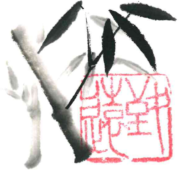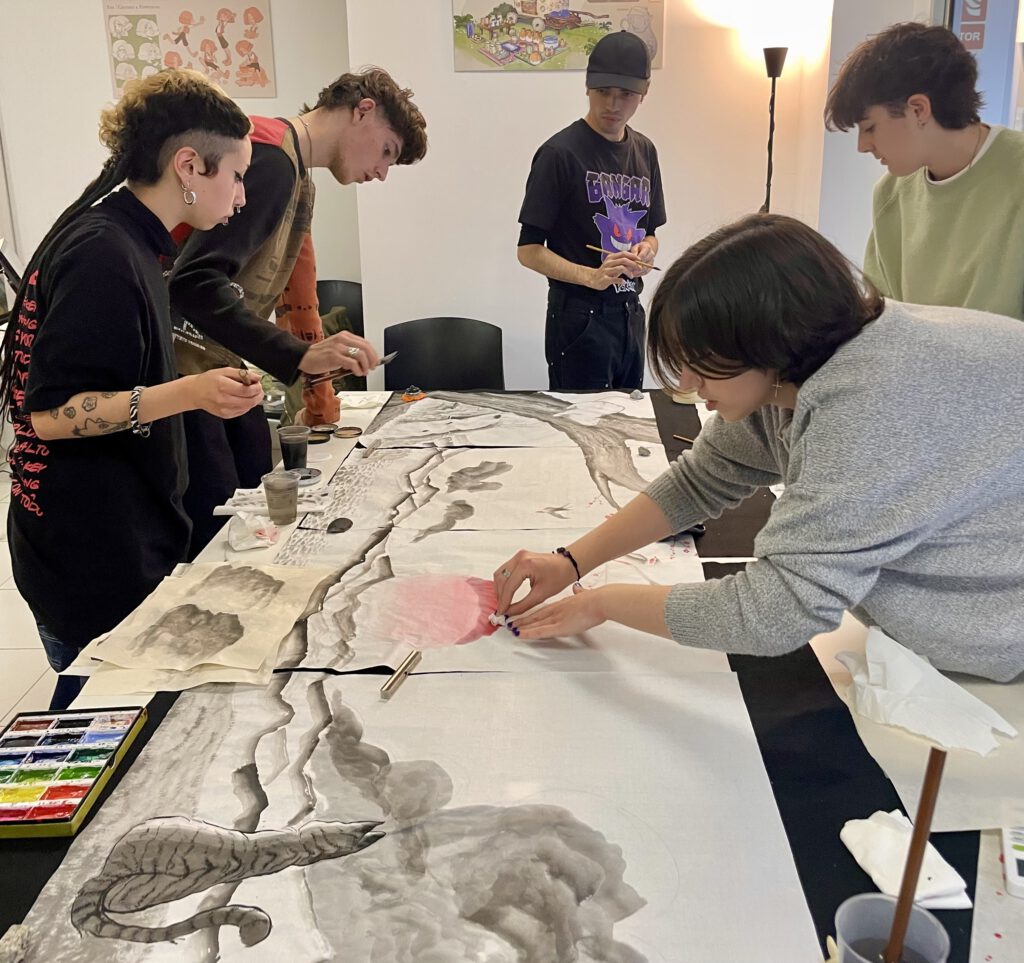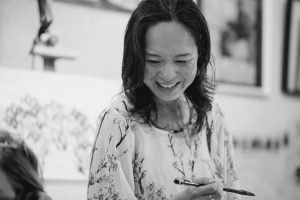Sumi-e, or Japanese ink painting, is an ancient discipline that combines technique, meditation and aesthetic appreciation. At Kaoru Hirose – Sumie, we have designed a four-day intensive course aimed at Concept Art students, where they will discover how this ancient practice can enrich their creative process and bring a totally different approach to the design of characters, scenarios and storytelling.
1. What is Sumi-e and why apply it to Concept Art?
Sumi-e is characterised by the exclusive use of black ink on Japanese paper, valuing each stroke for its purity and expressiveness. Unlike denser media such as oil or acrylic, Sumi-e is committed to the economy of lines and the handling of negative space (the ‘void’).
-
Control of the gesture: Each brushstroke must be sure, as it does not allow for corrections.
-
Mind-hand connection: The preparation of the inkstone and the fluidity of the stroke promote concentration.
-
Sensitivity to space: Learning to ‘draw with emptiness’ strengthens composition and balance.
For a Concept Art artist, mastering Sumi-e means improving the ability to synthesise forms and generate more expressive sketches in the early stages of a project.
2. Structure of the four-day workshop
Our four-day intensive course is designed to combine individual practice with a collective project. Below is a summary of how each day will unfold:
Day 1: Introduction and materials
-
Presentation of Zen philosophy and the origins of Sumi-e.
-
Ink stone handling (how to grind it to different densities).
-
First drawing exercises: lines, dots and glazes to measure the pressure of the brush.
Day 2: Techniques and textures
-
Tone scales to create depth and volume.
-
Hatching” techniques to simulate natural textures.
-
Individual practice of free compositions.
Day 3: Collaborative project – Fusuma-e
-
Team conceptualisation of Fusuma-e (襖絵), paint for sliding doors.
-
Design of large-scale sketches, definition of themes and layout of elements.
-
Transfer of sketches to adhesive Japanese paper.
Day 4: Implementation and evaluation
-
Joint painting of the Fusuma-e, coordinating strokes and shading.
-
Group feedback session and analysis of results.
-
Reflection on the integration of Sumi-e in future Concept Art projects.
3. Individual and collaborative dynamics
At the beginning of the workshop, each student explores different techniques individually: gradients, quick strokes, contrast work and representation of natural elements. This phase strengthens confidence in the brush and control of rhythm.
The second half of the course focuses on team dynamics, where students apply what they have learned to create a Fusuma-e together. This project requires visual communication, spatial planning and style coordination, essential skills for collaborative work in animation, video games or film studios.
4. Teaching experience since 2016
Since 2016, Kaoru Hirose has been teaching Sumi-e courses at various art colleges and universities. Throughout these years, we have found that:
-
Students incorporate traditional Sumi-e techniques into their Concept Art workflows.
-
Contact with authentic materials (sumi ink, natural hair brushes and washi paper) enriches the connection with Japanese culture.
-
The mix of individual practice and collaborative projects enhances both creative autonomy and teamwork skills.
This accumulated experience guarantees a solid didactic approach, where tradition and innovation merge in each session.
5. Modalities of delivery
We understand that every educational institution has different needs. Therefore, we offer two session formats:
-
One-day workshop: Ideal for intensive days or one-off events. In six hours, the basic concepts are introduced and exercises are carried out, culminating in a small-format mini-Fusuma.
-
Multi-session course: Run over several days (e.g. four consecutive days), it allows you to delve deeper into advanced techniques and complete a large-format Fusuma-e with more time for practice and reflection.
The choice will depend on your time availability and the objectives of your training programme.
6. Benefits for students and school
Organising a Sumi-e course brings benefits at all levels:
-
Reinforcement of expressive skills: Sumi-e teaches how to communicate ideas with minimal contours.
-
Improved attention and concentration: The preparation of the ink and the precision of the stroke promote discipline.
-
Cultural projection: Enriching the training offer with a technique linked to Japanese culture enhances the image of innovation.
-
Teamwork: The Fusuma-e project encourages collaboration and joint planning.
For the centre, this workshop represents an added value that can be highlighted on the web and social networks, attracting future students interested in differentiating artistic methodologies.
7. How to organise a Sumi-e course in your institution
If you would like to offer this intensive Sumi-e course at your school or university, please follow these steps:
-
Check availability: Contact Kaoru Hirose to arrange dates according to the academic calendar.
-
Define modality: Choose between a one-day workshop or a multi-session course, depending on your training needs.
-
Check infrastructure: Prepare a space with large tables, good lighting and easy cleaning (working with ink requires care).
-
Reserve materials: We provide the ink, the brushes and the Japanese paper; you only need to provide the space.
With these steps, you can easily and effectively integrate a workshop that combines tradition and avant-garde into your artistic programme.



